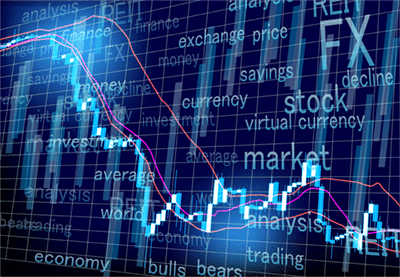702-660-7000
702-660-7000


It has now been over 15 years since the 2008 market crash, and the aftermath of that financial crisis continues to shape the current economic landscape. Over the past decade, many investors have grown accustomed to the high returns that the market has offered, leading some to believe that such yields are sustainable in the long term. As a result, many have once again turned to dividend-paying stocks as safe and reliable investments, forgetting that stocks are inherently volatile and are not designed to protect your principal. When the market slows down, these stocks can actually erode the very wealth you thought you had securely built.
Compounding the risk is the action of the Federal Reserve, which has been raising interest rates in an attempt to combat inflation and stabilize the economy. History has shown that when the Federal Reserve raises interest rates, it triggers a chain reaction that can burst the debt bubbles that have been building. Over the past decade, we have seen multiple debt bubbles expanding across various sectors of the economy—bubbles that are even larger and more complex than the subprime mortgage crisis that was ignited by interest rate hikes in 2008. For those paying close attention, these bubbles are a serious cause for concern, as they threaten to destabilize the financial markets once again, potentially leading to another significant crisis. The risk is more pronounced now, with debt at levels far surpassing what we saw before the 2008 crash.
Speaking of debt bubbles, the first one that comes to mind is student loan debt. That bubble is now over 1.5 trillion dollars with a default rate of over 10%.[i] That default alone represents $150 billion, which is over $1,190 per American household. When you consider that 4 out 10 American households don’t even have $400 to cover the cost of a basic emergency, that $1,190 could become catastrophic.
Then there’s the massive corporate debt bubble, which has ballooned to a staggering $9 trillion—about six times larger than the student loan debt bubble. This is a concern, especially with the Federal Reserve’s continued interest rate hikes, which don’t bode well for the short-term stability of this bubble. Unlike fixed-rate mortgages or car loans, corporate debt must be rolled over and renewed regularly. As interest rates rise due to the Fed’s policy, companies face increasing costs to refinance their debt. This could act as the proverbial “pin” that pricks and bursts the credit bubble. When that happens, the total amount of corporate debt could translate to over $71,428 per household in the U.S. This is concerning when you consider that the median American household has only about $4,830 in savings. Such a scenario could wreak havoc on the economy, leading to widespread financial instability.
So, why should you be worried about these debt bubbles? After all, it’s not your debt, right?
Wrong!
Many of these debts are indirectly owned by Americans through their retirement accounts, such as mutual funds, 401ks, and IRAs. When debt isn’t repaid on time, the burden of that unpaid debt ultimately falls on investors—the very people who are saving for their future. If the corporate debt bubble bursts, it’s likely that the cost will be passed on to you. So, if you’re invested in these financial vehicles, you’re already on the hook to help shoulder the fallout when these bubbles inevitably pop.
Same with the corporate debt. It wasn’t the average American citizen who created the sub-prime lending crisis in 2008. That was the banking corporation’s failure. But government proclaimed these banks were “too big to fail.” And therefore, Congress Bush and Obama rescued them by signing up the American public to pay those banks, not $21 billion dollars as we were first told, but “$14.4 trillion and counting.”[iii] Now think what could happen if another $10.5 trillion is added to that $14.4 trillion when the student loans and corporate debt bubbles pop. Pretty daunting thought.
It’s well-established that consumer spending accounts for 68% of the U.S. economy. When taxes are raised to bail out “too big to fail” institutions and corporations that have accumulated unsustainable levels of debt, everyone pays the price. As the government takes steps to alleviate these institutions’ financial burdens, the impact is felt across the board, and it means there will be less disposable income for you to spend and keep circulating within the economy.
This situation should raise red flags about the risks you’re taking with your money today. Keeping your investments exposed in areas that will be the hardest hit when the debt bubbles burst puts you at risk of losing a portion of your wealth. On top of that, the inevitable tax increases required to cover the fallout from these bailouts will be the second blow to your finances. This one-two punch—first through investment losses and then through higher taxes—has the potential to knock you out financially, leaving you in a precarious position as these financial crises unfold.
Ironically, the product that most people mock and complain about, Participating Whole Life insurance, protects you from both of these nasty consequences. When debt bubbles pop you don’t have to be in a position to take those two hard hits. That is why Participating Whole Life insurance has been such a trusted, sustainable and stable product to own for centuries. It protects your money from the market.
 Tomas P. McFie DC PhD
Tomas P. McFie DC PhD
Tom McFie is the founder of McFie Insurance and co-host of the WealthTalks podcast which helps people keep more of the money they make, so they can have financial peace of mind. He has reviewed 1000s of whole life insurance policies and has practiced the Infinite Banking Concept for nearly 20 years, making him one of the foremost experts on achieving financial peace of mind. His latest book, A Biblical Guide to Personal Finance, can be purchased here.
If you are beginning to realize the risk that you are exposed to in the market and want to do something about it before these debt bubbles burst, give us a call 702-660-7000. We can help.
[i][i][i] https://www.forbes.com/sites/zackfriedman/2018/06/13/student-loan-debt-statistics-2018/#284d11c27310
[ii] https://www.cnbc.com/2018/11/21/theres-a-9-trillion-corporate-debt-bomb-bubbling-in-the-us-economy.html
[iii] https://www.motherjones.com/politics/2009/12/real-size-bailout-treasury-fed/